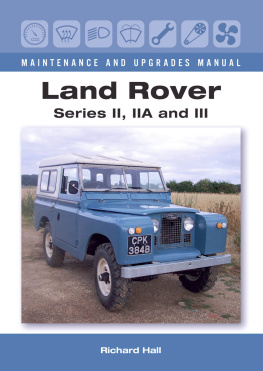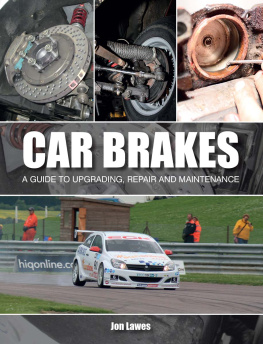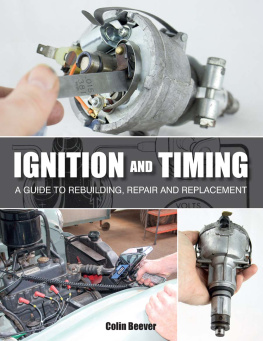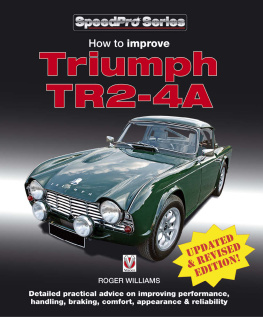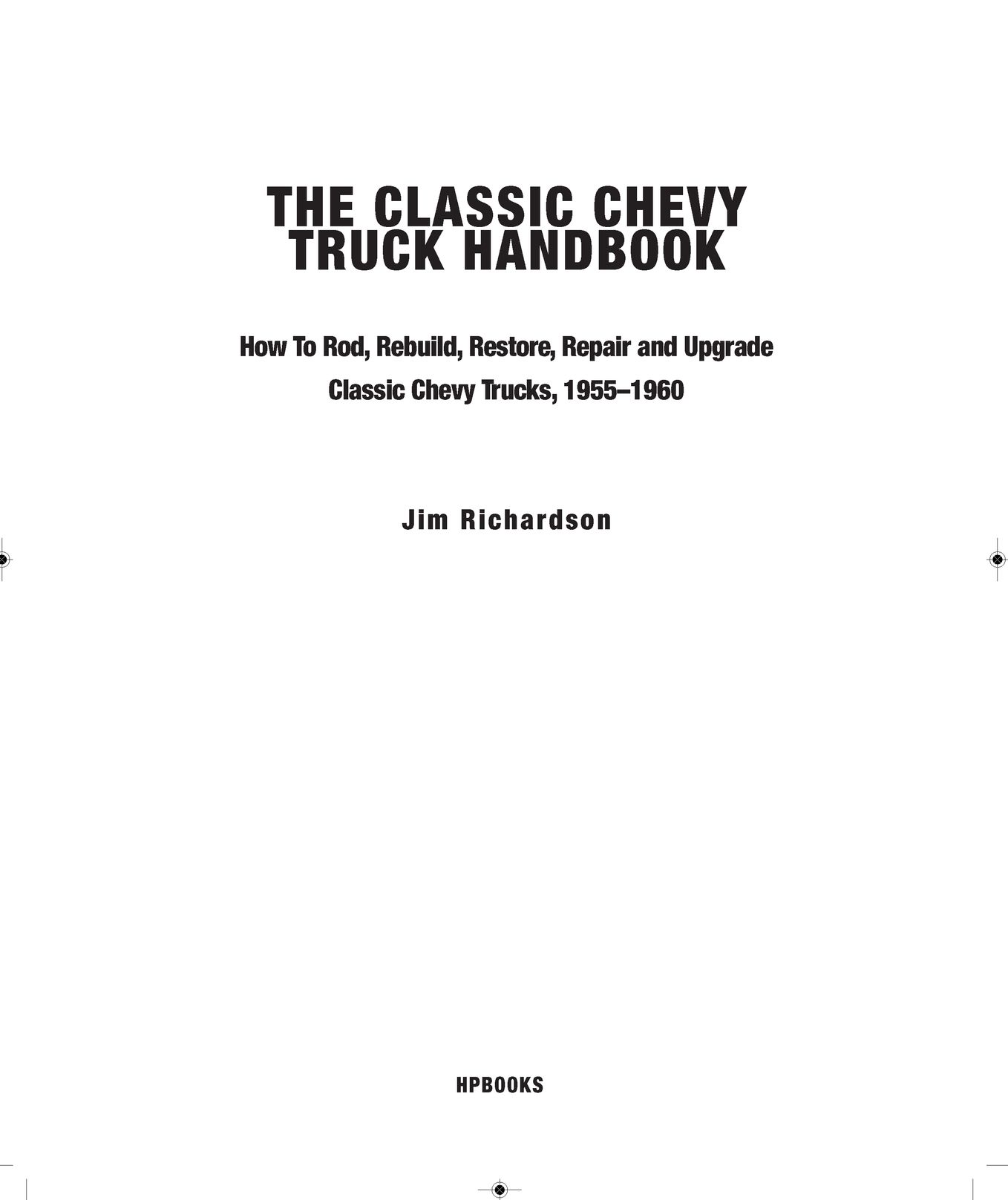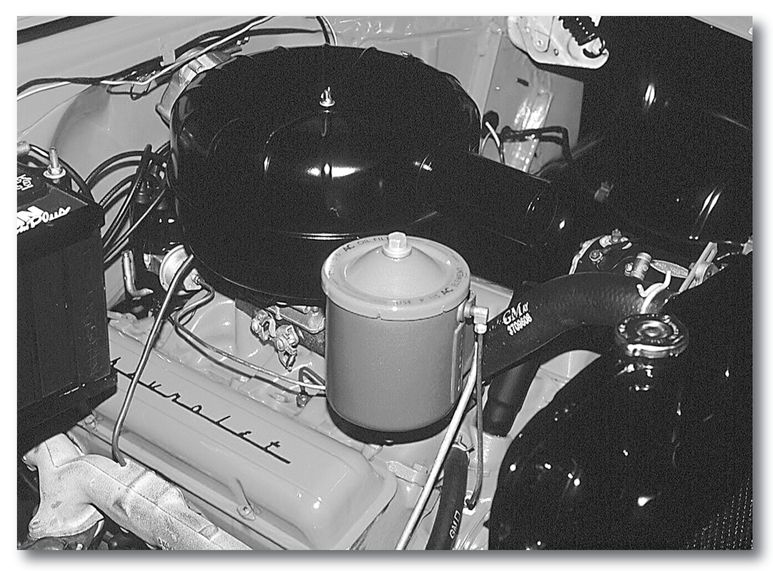Table of Contents
ACKNOWLEDGMENTS
First I must thank my editor, Michael Lutfy, for giving me my start years ago and for sticking with me through thick and thin. And I also wish to thank my son Steve, an accomplished welder who knows air conditioning better than anyone I know, for all of his hours of help doing this book. Also a big thank you is due to my good friend, master mechanic Larry Cain, for his help with all the wrenching. I would also like to thank my pal Bruce Haye, consummate panel beater from Whitianga, New Zealand, for his help with body and fender work. In addition, I must thank John Sloane of the Eastwood Company whose wise council and assistance was invaluable. I also learned a great deal from all of the fine companies listed in the Sources section who were very generous with their assistance as well. And finally, I need to thank my wife, Bette, who put up with my months of effort and time away from home and hearth in order to make this book happen.
INTRODUCTION
Before the mid-50s, Chevrolets pickups (as well as everybody elses offerings) were lumpy and utilitarian. They were merely appliances. And then came the new Bow Tie offerings for 1955, which were styling knockouts, especially the beautiful Cameo, slab-side models. As a result, although the pickups of the mid-50s and early 60s were still working vehicles, people began driving them to town and to church on Sunday as well. Thanks to their handsome new looks, pickup trucks became acceptable as daily transportation. And thats a trend that still exists today.
Big back windows, two-tone paint schemes, stainless trim, as well as deluxe interiors were available for those who wanted them, as were outstanding innovative 265 cubic-inch V-8 engines and automatic transmissions. But underneath the new bodywork was essentially the same simple workhorse Chevrolet pickup for which the company had become famous. Yes, the closed driveline was dumped for a more modern open driveshaft system, and the 216 six-cylinder engine with its splash lubrication and cast-iron pistons was jettisoned for the more modern 235 inline-6 with full pressure lubrication and aluminum pistons. But the chassis remained nearly identical.
Today, classic (55-60) Chevy trucks are still plentiful because of their nearly invincible ruggedness and simplicity and the fact that replacement parts are still cheap for them. In fact, nearly everything is available for them for a lot less than what parts for new trucks would set you back. As an example, a new fuel pump for a classic Chevy truck goes for just $45. Try finding one for your modern truck for that price. And a professionally overhauled small-block V-8 can be had for as little as $500. Also, you can rebuild your trucks entire steering system for under $200. In fact, I would guess that you could restore a tired classic Chevy truck for less than you could buy a contemporary pickup!
And if you did, you would have a vehicle that would continue to increase in value rather than be worth less and less as the years go by. After all, the 50s-era second series Chevy trucks have already stood the test of time. And they are still fairly common and inexpensive to buy unless you just have to own a rare Cameo with all the accessories, or want a fully tricked-out show truck all ready to go.
Of course, there are those who will tell you that the old trucks dont go as fast as modern ones, and they would be right, but that is easily remedied. In fact, just about any engine you can imagine will fit under the hood of a classic Bow Tie pickup with room to spare. And transmissionsboth automatic and standard, four, five or even six speedsare also available. Well tell you how to install my favorite, the Mopar New Process A833 four-speed with overdrive.
"Yeah but they dont stop very well either," you say? Thats easily remedied too, with a bolt-on power disc brake kit that can be installed in an afternoon. Upgrading ride and handling is no big deal either. In fact, nothing on classic-era Chevy trucks is very difficult to do. All of the upgrades and restoration work outlined in this book can be done at home with fairly basic tools, and we will show you how to make a tired old basic work truck into a vehicle that you will be proud to drive and enjoy.
You too can have a new classic Chevy truck that will last a lifetime, look great and be worth more ten years from now than what you put into it originally. Read on and we will show you how.
Jim Richardson
Chapter 1
Small-Block Chevy 101
This is the engine that started it all in 1955. Note bypass oil filter on top unique to that year.
You can put any engine you like in your classic truck. There is even room for a huge Chrysler Hemi or one of those 500 cubic-inch Cadillac motors if you so desire. On the other hand, these days, with fuel prices being as high as they are, most of us would prefer to stay with one of Chevrolets small-block engines. Any of them will bolt in, you can tune them to make 600 horsepower or more if thats what you want, and everything in the way of replacement parts and speed components is readily available for them at nominal prices.
Thats because the Chevy small-block is quite possibly the best American automotive engine design ever. It is over fifty years old and still being produced, albeit in modified form. And it has been put into everything from VW Beetles and vintage Willys coupes to Jaguars and even Fords because it is light, powerful, dependable and inexpensive to super-tune.
And if you are one of these guys who believe that there is no substitute for cubic inches, you can always install the 400 cubic-inch version that is the big daddy of all small-blocks. However, even the little 265 that Chevy debuted in 1955 can be made to perform pretty well with a little tweaking, and the 283 that first appeared in the 1957 models is an old favorite with hot rodders that has no real shortcomings either, except perhaps its small displacement.
Of course, many of our trucks came with Chevys venerable 235 cubic-inch six-cylinder engine, which is an excellent powerplant as well, but if you have a classic pickup that was V-8 powered from the factory, it will most likely be one of the first two engines listed below. Also, if you want to swap a six for a V-8 its pretty easy, but you will need to change out the bellhousing for one that is designed to accommodate a V-8, and you will have to move the radiator back behind its cradle.
Chevy has built its small-block engines in a number of different displacements over the years and with a couple of exceptions, they are all great motors, even in their stock form. And any of them can be built to produce truly impressive power with a little effort and a few bolt-on parts. Problem is, they all look pretty much alike, and you will want to know which engine you are working on. So before we get into tuning, lets review the possibilities:
All of the Chevrolet small-block V-8s were painted Chevy orange, with a couple of exceptions. In 1956, for that year only, the V-8 engine was ruby red. And then in 1957, though the 283 was offered for the first time that year, the 265 was still available in trucks. These smaller engines are easy to spot because they were painted a bright lemon yellow.



